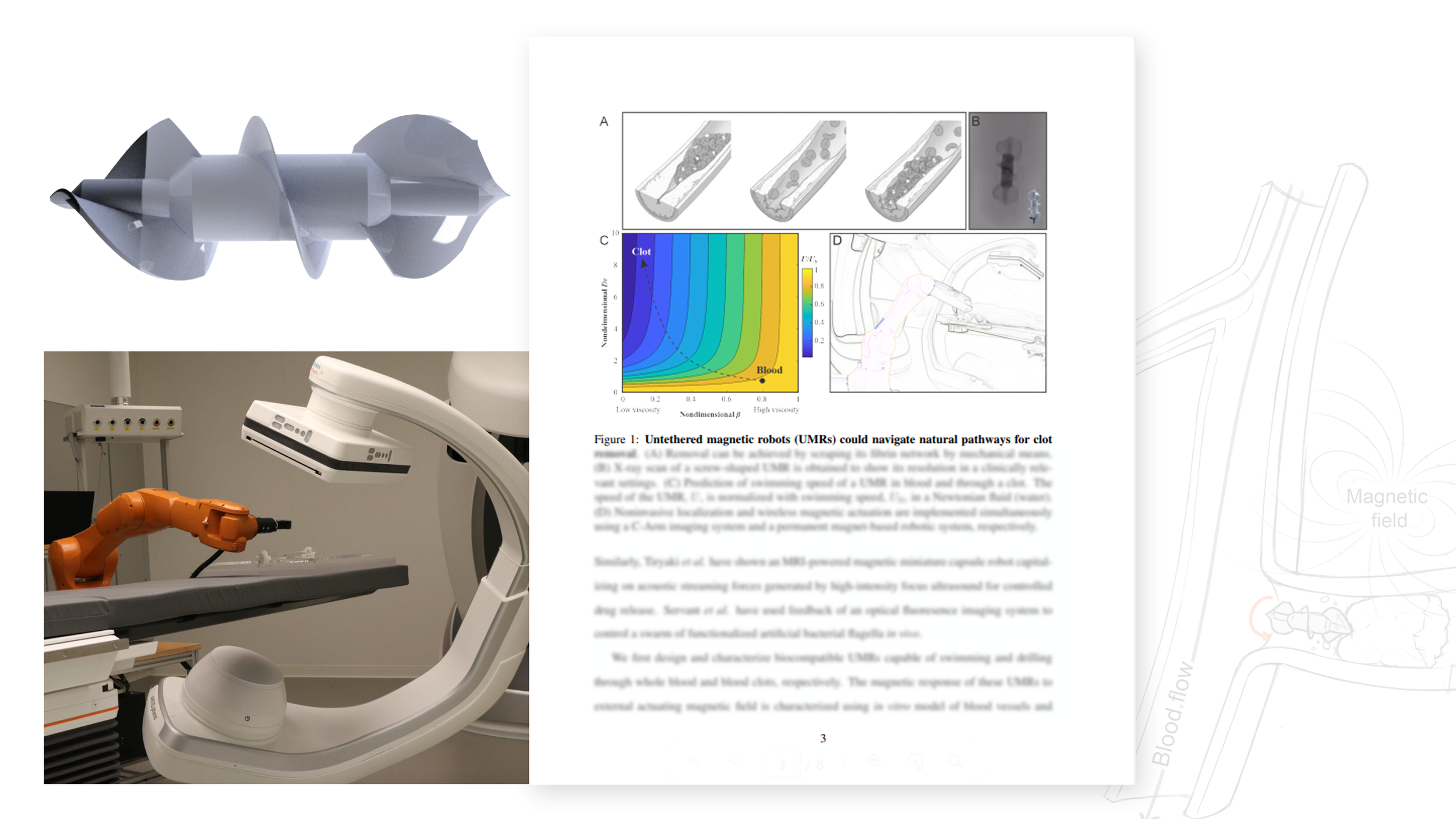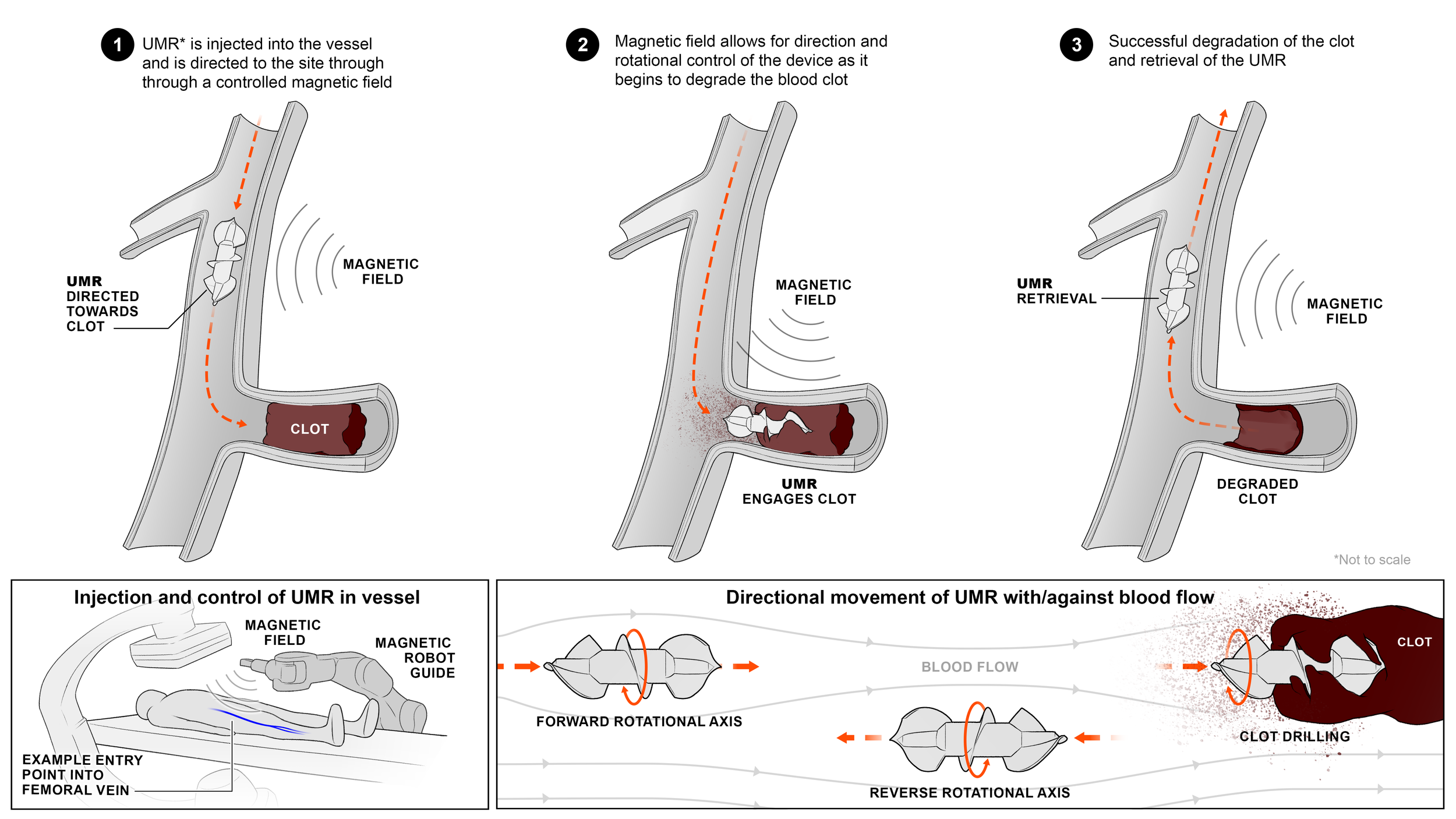2D Medical Illustration: Medical device illustration for research manuscript
About the project
Our team created a sequence of illustrations for a manuscript written by researchers working in the field of Biomedical Engineering and Design Production. Their team were working on an exciting new robotic medical device to target blood clots in the body.
Our Services
2D medical illustration
What our client provided
Research papers
CAD 3D models
Our Process
Understanding the science
First we start with research and try to simplify the research into an easy-to-understand sequence of steps. Our team reviewed the manuscipt draft and the CAD models provided by the client and worked with them to develop an easy-to-understand diagram.
Round 01 - Rough Sketches
We always begin with rough concept sketches to ensure we’re aligned with the client’s vision and science from the very start. These initial sketches are shared for review and feedback, allowing the client to guide the direction early on. During this stage, we also address any questions that arise from our research and initial concepts, helping to clarify details and ensure accuracy before moving into final linework and colour.
Round 02 - Tight Sketches
We then moved on to refining the sketches in line with the client’s feedback, carefully incorporating their changes to ensure the visuals meet both their technical requirements. This stage is highly collaborative, allowing us to fine-tune anatomy, perspective, and procedural accuracy while maintaining a clear and engaging visual narrative. By iterating on the sketches at this stage, we ensure that all stakeholders are aligned before moving into the final rendering phase. This is key to saving time, reducing revisions later in the process, and laying the groundwork for a polished, high-impact final product.
Round 03 - Final Illustration
Once the refined sketches are approved, we take on board any final client feedback and move on to completing the full-resolution illustrations. At this stage, we focus on rendering accurate anatomical details, applying lighting, texture, and colour to bring the visuals to life.






